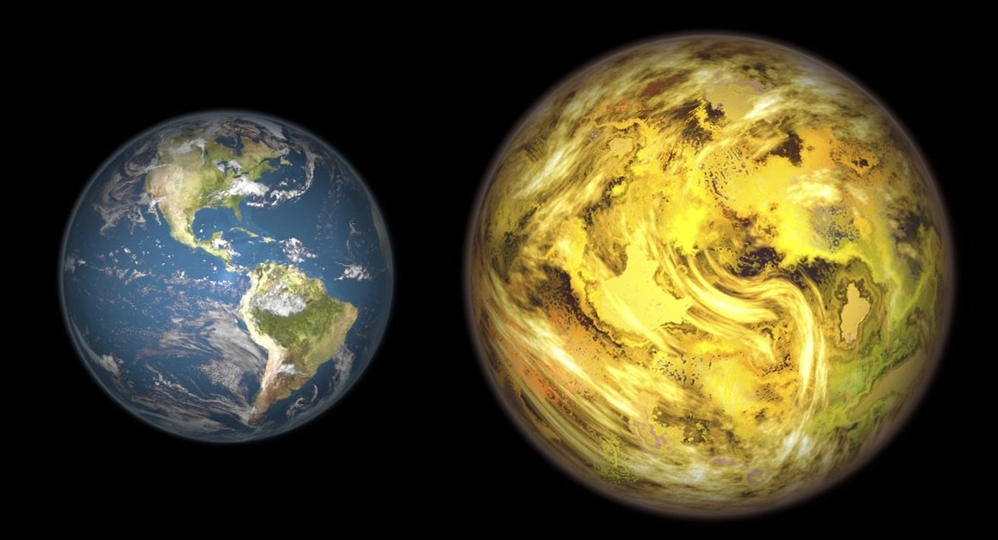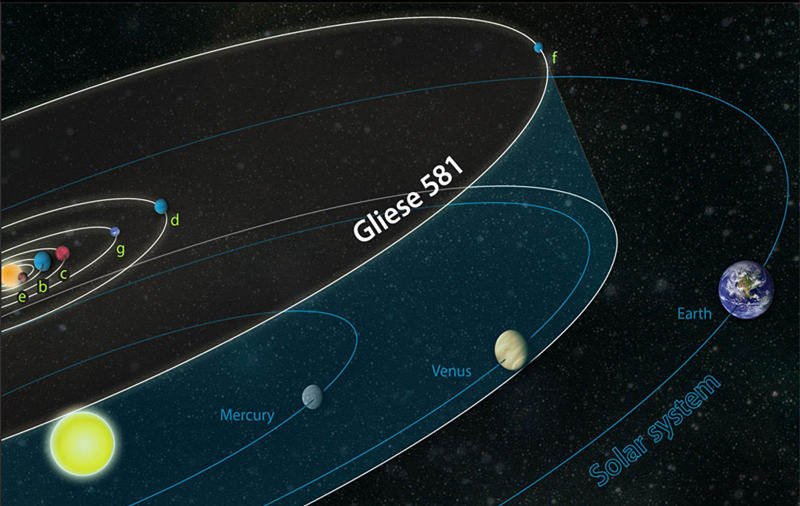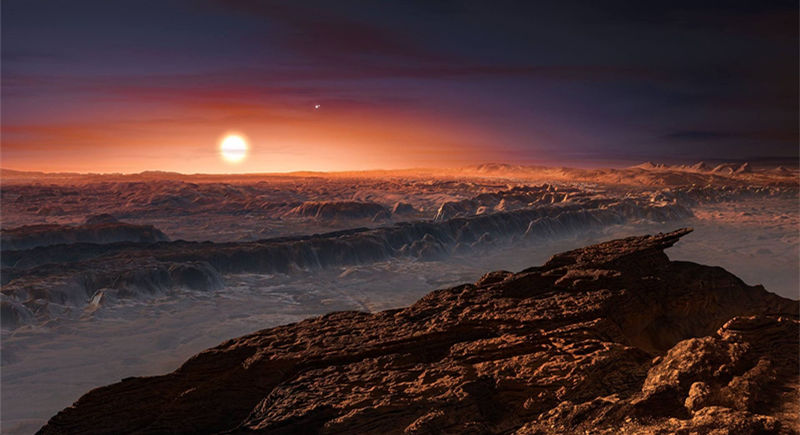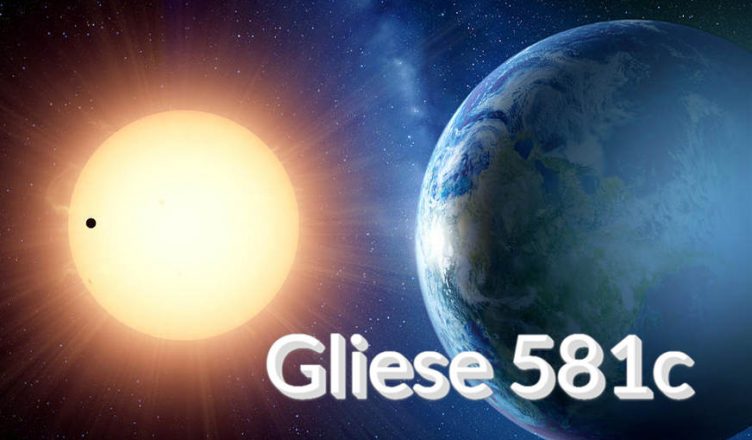In 2007, scientists made a groundbreaking discovery—the identification of a celestial body that captured widespread attention: Gliese 581c. This super-Earth orbits within the Gliese 581 star system, a mere 20 light-years away from our own planet. The proximity of Gliese 581c and its initial characterization as potentially residing in the star’s “habitable zone” generated immense interest within the scientific community. The tantalizing prospect of a world with liquid water on its surface positioned Gliese 581c as a potential habitable exoplanet. However, recent studies have introduced contrasting perspectives, suggesting a Venus-like environment. This shift in understanding underscores the significance of delving deeper into the discovery and fundamental characteristics of Gliese 581c. In this study, we aim to explore the intricacies of Gliese 581c, unraveling the mystery behind why this planet has captivated the curiosity of scientists. This exploration not only enhances our comprehension of extrasolar planets but also serves as a pivotal step in the quest to identify habitable planets and potential extraterrestrial life.
1.Physical Characteristics of Gliese 581c: Exploring Mass, Radius, and Orbit
Mass: The determination of Gliese 581c’s mass involves the radial velocity method, a technique crucial for detecting exoplanets. Calculated through the periodic movements around the common center of mass between Gliese 581 and its planets, the minimum mass of Gliese 581c is established at 5.5 Earth masses. Dynamic simulations suggest that the system would be unstable if the mass significantly exceeded this limit, with an upper bound set at 10.4 Earth masses. However, the radial velocity method alone cannot pinpoint the true mass, emphasizing the need for stability in the planetary system.
Radius: As Gliese 581c has not been observed in transit, direct measurements of its radius are unavailable. The radial velocity method, offering a lower limit on the planet’s mass, restricts the utility of theoretical models predicting radius and structure. If we assume a random orbit orientation, the true mass is likely close to the measured minimum mass, allowing for various radius calculations. Udry’s team suggests that, if Gliese 581c is rocky with a substantial iron core, its radius could be approximately 50% larger than Earth’s, resulting in a gravity 2.24 times stronger. Conversely, if icy or watery, the radius might be less than twice Earth’s, with surface gravity at least 1.25 times stronger. Divergent views among scientists propose the potential for “rock giants,” “cannonball” planets of solid iron, “gas dwarfs,” carbon-rich “diamond worlds,” purely hot “ice VII worlds,” or purely “carbon monoxide worlds.” Unfortunately, the lack of observed transits hampers accurate radius measurement.

Orbit: Gliese 581c completes an orbit in just 13 Earth days, with an orbital radius a mere 7% of Earth’s, approximately 11 million km. Positioned on the “warm” edge of the star’s habitable zone due to its host star’s smaller size, this proximity, defined by astrophysics as the “habitable zone,” raises questions about the potential for liquid water. The orbit’s unique characteristics, combined with the planet’s mass and radius, contribute to our understanding of its habitability. Further studies and observations are needed to unlock the full scope of Gliese 581c’s physical traits and shed light on its place in the cosmos.
Position in the Gliese 581 System and the Concept of the Habitable Zone:
Orbiting the cooler red dwarf star Gliese 581, Gliese 581c holds a unique position within its planetary system. The red dwarf’s lower temperature situates the habitable zone, where conditions for liquid water on a planet’s surface may exist, closer to the star compared to our solar system’s habitable zone. Positioned on the edge of this habitable zone, Gliese 581c has sparked considerable interest regarding its potential suitability for life.
Initial optimism regarding the habitability of Gliese 581c was fueled by its location within the star’s habitable zone, suggesting the possibility of liquid water. However, subsequent research introduced alternative perspectives. The planet’s proximity to its host star implies higher surface temperatures, and if tidal locking is in effect, with one side permanently facing the star and the other in perpetual darkness, this could further complicate the prospects for habitability.
Therefore, the position of Gliese 581c within the Gliese 581 system and the concept of the habitable zone are pivotal aspects of research. Scientists strive to understand whether this exoplanet possesses the conditions conducive to sustaining life. This investigation not only enhances our comprehension of Gliese 581c’s intrinsic nature but also poses crucial questions about our broader understanding of exoplanets and habitability in the cosmos.

2. Characteristics of the Parent Star Gliese 581:
Spectral Type, Luminosity, Distance:
The parent star of Gliese 581c, known as Gliese 581, belongs to the category of M-type dwarf stars, specifically, a red dwarf. In comparison to the Sun, this star exhibits a cooler temperature. Its spectral type and luminosity variations showcase both similarities and differences when contrasted with the stars in our solar system. Situated approximately 20 light-years away from Earth, the Gliese 581 system’s proximity, albeit in cosmic terms, plays a significant role in influencing the environmental conditions of Gliese 581c.
Differences and Similarities with the Solar System and their Impact on Gliese 581c:
In contrast to our solar system, the Gliese 581 system displays several distinctions. Primarily, being a red dwarf, Gliese 581 has a cooler temperature than the Sun, resulting in a habitable zone that is closer to the star. This proximity significantly impacts planets like Gliese 581c, placing them in closer orbits and affecting their environmental conditions. The characteristics of a red dwarf, including its dimmer nature, enhance the detectability of planets transiting in front of it, making it easier for scientists to observe. Additionally, the smaller size of the star amplifies the gravitational effects between the planets and the star.
Characteristics and Habitability:
Research on Gliese 581 has encountered differing opinions over the years, exemplified by the disputed discovery of Gliese 581g in 2010. The uncertainty about the number of planets complicates the determination of Gliese 581c’s radius. The absence of direct observations of Gliese 581c crossing its star’s face necessitates reliance on its influence on other celestial bodies for understanding its characteristics, such as radius and atmospheric thickness. Proximity to its star, causing a short orbital period of about 13 days, suggests the possibility of tidal locking, where one side constantly faces the star.
In the ongoing discussions about the habitability of Gliese 581c, the potential presence of tidal locking emerges as a crucial consideration. Earth’s regular day-night cycle has been integral to the evolution of life, and a planet in tidal lock poses challenges to the adaptability of life forms. Moreover, studies suggest that due to its proximity, Gliese 581c might exhibit higher surface temperatures, akin to Venus, raising questions about its habitability.

The characteristics of the parent star, including its spectral type, luminosity, and differences from our solar system, directly influence the environmental conditions of Gliese 581c. These factors remain pivotal in the ongoing exploration of the habitability of this exoplanet. Although Gliese 581c has seen relatively less discussion in scientific literature in recent years, astronomers persist in refining models of planets in close proximity to their parent stars, providing valuable insights into our understanding of similar celestial bodies.
3. Atmospheric Composition and Temperature:
Possible Atmospheric Composition and its Impact:
Gliese 581c, positioned within the Gliese 581 system, prompts intriguing discussions about its potential atmospheric composition and the consequent impact on surface temperatures. Unfortunately, the lack of direct observations of Gliese 581c in transit hampers precise measurements of its atmospheric components. The radial-velocity method employed for its detection primarily provides information on its mass, limiting our understanding of its radius and atmospheric properties. Theoretical models propose diverse scenarios, ranging from a rocky planet with a large iron core to an icy and/or watery planet. These variations in composition significantly influence the planet’s potential habitability.
Considering the proximity of Gliese 581c to its parent star, tidal locking is a prevalent phenomenon. The gravitational forces exerted by the star likely result in one hemisphere perpetually facing the star (day) and the other hemisphere facing away (night). Tidal locking has implications for the distribution of heat and atmospheric conditions on the planet. Models suggest that tidal locking can lead to significant heating, potentially triggering geological activities such as volcanoes and plate tectonics. However, the actual atmospheric composition plays a crucial role in determining the extent of these effects.
Temperature Range and Assessment of Liquid Water Possibility:
Gliese 581c’s orbital characteristics, with a short orbital period of 13 Earth days and a proximity to its star, contribute to a unique temperature regime. The effective temperature, influenced by the star’s luminosity, is estimated to be in a range that allows for liquid water under certain assumptions. The calculated effective temperature of Gliese 581c, considering a Venus-like albedo, falls within a range that overlaps with the conditions conducive to liquid water. However, it is essential to note that effective temperature and actual surface temperature can vary significantly due to the greenhouse properties of the planet’s atmosphere.

Studies raise doubts about the habitability of Gliese 581c, suggesting a potential runaway greenhouse effect akin to Venus. The presence of a sufficient number of reflective clouds or alternative scenarios, such as a planet covered in ice, might influence habitability. However, the stability of these conditions remains uncertain. Theoretical models also explore the possibility of volatile compounds evaporating on the star-facing side and condensing on the night side, leading to ice cap formation. The lack of direct evidence for liquid water on Gliese 581c and the challenges posed by its atmospheric conditions contribute to ongoing debates about its habitability.
In conclusion, while Gliese 581c’s orbital and tidal characteristics offer insights into its potential climate, the determination of its atmospheric composition and its impact on surface conditions remains a complex puzzle that requires further exploration and advancements in observational techniques.
4. Habitability and Possibility of Life on Gliese 581c:
In assessing the habitability of Gliese 581c, various factors such as its potential atmospheric composition and surface temperature range need to be considered. Gliese 581c is classified as a super-Earth, with a mass at least 5.5 times that of Earth, located within the habitable zone of its parent star, Gliese 581. However, the possibility of liquid water existing on its surface is influenced by several complex factors.
Atmospheric Composition and Temperature:
Since direct observations of Gliese 581c’s atmosphere are unavailable, a precise understanding of its composition requires further exploration. Theoretical models propose diverse possibilities, ranging from rocky planets to those covered in ice and snow, all of which significantly impact habitability. Given the proximity to its parent star and the effects of tidal locking, the stability of the atmosphere and greenhouse effects become crucial in determining Gliese 581c’s habitability.
Possibility of Liquid Water:
While early research expressed optimism about the presence of liquid water on Gliese 581c, subsequent studies suggest an environment more akin to Venus in our solar system. Although calculations of the effective temperature indicate a range where liquid water could exist, uncertainties related to the greenhouse effect and atmospheric composition complicate the assessment of habitability. Cloud cover, climatic dynamics, and other atmospheric factors play a crucial role in determining the potential for liquid water.
Conditions for Life:
Considering the extreme temperature range of Gliese 581c and its tidally locked surface, challenges emerge for the existence of life. Life on Earth has evolved to adapt to diurnal cycles of day and night, whereas perpetual daylight on one side and perpetual darkness on the other present unknown challenges for evolution and adaptation. Additionally, the planetary geology, influenced by tidal locking, may affect habitability factors such as volcanic activity and plate tectonics.

5. Limitations of Current Research and Future Directions:
The seventh paragraph addresses the limitations inherent in the current understanding of Gliese 581c and points towards potential avenues for future research that may necessitate additional observations or simulations for more accurate conclusions.
1. Observational Challenges: The paragraph acknowledges that Gliese 581c poses observational challenges. Despite being one of the earliest super-Earths detected, the planet has not been directly observed passing across its star, limiting the precision of certain measurements.
2. Inference from Celestial Bodies: Researchers heavily rely on indirect methods, such as the planet’s influence on other celestial bodies, to infer Gliese 581c’s characteristics. This indirect approach introduces uncertainties, particularly in determining its radius and composition.
3. Temperature and Composition Uncertainties: The discussion on Gliese 581c’s potential surface temperature highlights significant uncertainties due to the lack of information about the planet’s composition. Whether it has a rocky or watery composition greatly affects its surface conditions, making it a critical yet unknown factor.
4. Tidal Locking and Habitability: The paragraph reiterates the impact of tidal locking on Gliese 581c’s habitability, emphasizing the challenges in predicting how life could adapt to such extreme conditions. The absence of a regular day-night cycle poses uncertainties regarding the potential for life forms to evolve.
5. Dynamic Nature of Exoplanet Research: It emphasizes the dynamic nature of exoplanetary research, where newer discoveries, like those from the Kepler and TESS space telescopes, have expanded the breadth of known exoplanets. This evolution in the field has somewhat shifted attention away from Gliese 581c.
6. Future Research Directions: The paragraph concludes by pointing towards future research directions. It suggests that to overcome current limitations, scientists may need to employ advanced observational techniques or conduct sophisticated simulations to refine and enhance our understanding of Gliese 581c.
Anticipated Insights: The limitations outlined in this paragraph underscore the challenges researchers face in fully characterizing Gliese 581c. By acknowledging these limitations, the paragraph sets the stage for future investigations that might leverage technological advancements to address current uncertainties and provide more nuanced insights into the physical and environmental properties of Gliese 581c.
Forward-Looking Perspective: The concluding note emphasizes the forward-looking perspective of exoplanetary research, emphasizing the need for continuous advancements to unravel the mysteries surrounding Gliese 581c and similar celestial bodies.

END:
In conclusion, the in-depth exploration of Gliese 581c has provided us with valuable insights into many of its physical characteristics, ranging from mass and orbit to its position within the Gliese 581 system. However, our understanding of its habitability and the potential for life still faces a myriad of challenges and unknowns. As technology continues to advance, future research will be more focused on unraveling further mysteries surrounding this exoplanet.
Current observations and simulations suggest that Gliese 581c may exhibit an environment more akin to Venus than the initially anticipated Earth-like conditions. Nevertheless, this does not signify the end of our understanding of its habitability. Future studies can delve deeper into the planet’s atmospheric composition, temperature distribution, and the potential presence of liquid water through more precise observations and advanced simulations.
With the progression of astronomical techniques and the deployment of next-generation telescopes, there may be opportunities to directly observe Gliese 581c’s atmosphere, providing more detailed information. Additionally, there could be more discoveries of Earth-like planets in the future, enabling comprehensive comparisons and analyses that reveal similarities and differences between such planets.
The research on Gliese 581c has offered a chance to explore exoplanets and their habitability, expanding our understanding of the potential for life beyond our solar system. While this planet may no longer be the primary focus in scientific investigations, its significance as an early-discovered super-Earth will have a lasting impact on our cosmic comprehension. Our in-depth knowledge of Gliese 581c contributes to solidifying our understanding of Earth-like planets overall, fueling curiosity in unknown realms and propelling efforts for greater breakthroughs in space exploration and planetary science.
More UFOs and mysterious files, please check out our YouTube channel: MysFiles
The Day After Roswell – UFO secrets and Reverse Engineering








